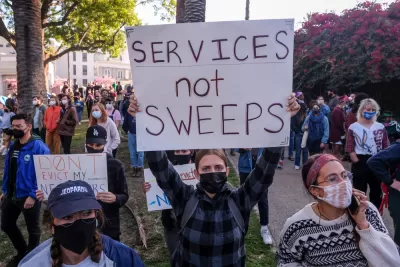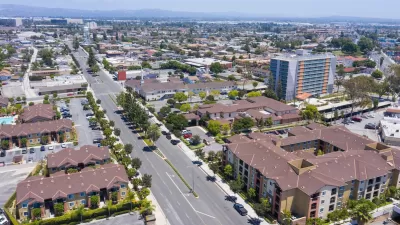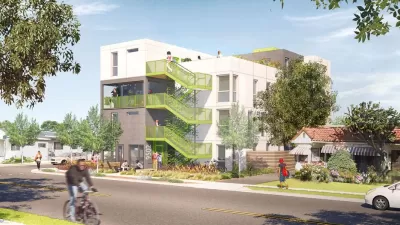Advocates say L.A.'s new focus on clearing 'unsightly' homeless encampments is a political band-aid that won't help people find permanent housing.

Benjamin Oreskes and Doug Smith report on a new policy in the city of Los Angeles aimed at clearing homeless encampments that critics say is an inhumane and politically motivated solution to a much bigger problem.
The approved motions authorize the city to post signs notifying people camped in the designated locations that they have 14 days to leave. Outreach workers will offer shelter beds to everyone affected to keep the city in compliance with a federal court ruling that prohibits the ticketing or arrest of anyone for camping in a public space when no shelter is available.
So far, City Council members have suggested close to 300 locations to designate as off-limits to camping. According to the article, Mayor Eric Garcetti called the policy a balance between the needs of unhoused people and pressures from neighborhood groups. Advocates for the unhoused say that "the change in policy elevates politics over need, creating a squeaky-wheel strategy of clearing those street encampments that have become the biggest liabilities to members of the City Council."
Over 40,000 people experience homelessness in Los Angeles each year, with that number far outpacing the supply of shelter beds or transitional housing. Earlier this year, Councilmember Mitch O'Farrell received widespread criticism during what many perceived as an aggressive clearing of an encampment in Echo Park. While the council has voted to fund more outreach and supportive housing programs, some activists argue that temporary housing solutions like the tiny home villages built this year don't go far enough to provide long-term solutions for unhoused people, who often fall back into homelessness after relocating to transitional housing.
FULL STORY: L.A. just changed its entire approach to homelessness. Does it place politics above need?

Maui's Vacation Rental Debate Turns Ugly
Verbal attacks, misinformation campaigns and fistfights plague a high-stakes debate to convert thousands of vacation rentals into long-term housing.

Planetizen Federal Action Tracker
A weekly monitor of how Trump’s orders and actions are impacting planners and planning in America.

In Urban Planning, AI Prompting Could be the New Design Thinking
Creativity has long been key to great urban design. What if we see AI as our new creative partner?

King County Supportive Housing Program Offers Hope for Unhoused Residents
The county is taking a ‘Housing First’ approach that prioritizes getting people into housing, then offering wraparound supportive services.

Researchers Use AI to Get Clearer Picture of US Housing
Analysts are using artificial intelligence to supercharge their research by allowing them to comb through data faster. Though these AI tools can be error prone, they save time and housing researchers are optimistic about the future.

Making Shared Micromobility More Inclusive
Cities and shared mobility system operators can do more to include people with disabilities in planning and operations, per a new report.
Urban Design for Planners 1: Software Tools
This six-course series explores essential urban design concepts using open source software and equips planners with the tools they need to participate fully in the urban design process.
Planning for Universal Design
Learn the tools for implementing Universal Design in planning regulations.
planning NEXT
Appalachian Highlands Housing Partners
Mpact (founded as Rail~Volution)
City of Camden Redevelopment Agency
City of Astoria
City of Portland
City of Laramie





























